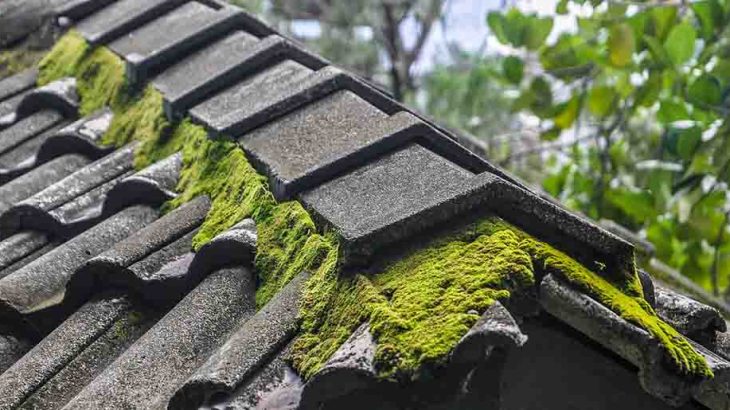Over time, moss can form on roof tiles as they are continually exposed to the elements. This may appear harmless, but it is very harmful because cellular threads grow within the pores of the roofing material. Therefore, it is advisable to remove moss regularly. However, the following points should be noted:
Moss is the most harmful of all roof contaminants. We have looked at ways to remove it quickly and easily and ways to prevent it.
How Does Moss Form on Roofs?
Moss is caused by the seeds of the rail plant moving regularly in the wind and adhering to roof tiles and other surfaces. When this becomes moss, a green layer forms on the roof tiles. Roofs facing north are particularly prone to this phenomenon due to the lack of sunlight. Wooded areas or other mossy roofs in the vicinity can also cause moss to grow on the tiles faster.
Why is Moss Harmful?
Roof tiles ensure the waterproofing of the roof. For this reason, they are specially shaped to allow water to drain directly to the eaves. This is an essential function, but unfortunately, it can be interfered with by moss. Instead of roots, moss has rhizoids, which attach to the substrate. This bundle of cells extends deep into the tile, containing water. As it begins to freeze, this water expands and can cause large cracks and fissures in the tiles.
Removing the Moss Yourself
If you can easily reach the roof, you can remove the moss yourself. You can do this with a rake or joint scraper. This will allow you to peel off the moss, which can be easily removed from the roof. The roof can then be cleaned with a high-pressure hose, and the roof will be clean again.
Tip: Treat the roof with moss inhibitors. These chemicals are designed to prevent moss from growing again after removal.
Removing Thick Moss from Terraces and Balconies
Removing thick moss cushions from terraces and balconies is done by hand. The moss cover or moss cushion is scraped from the ground with a smooth slider and returned with a broom for disposal. Moss may be disposed of with organic waste, and residues of sodium mixtures will also work well if they adhere.
Be careful with the moss you remove, as it will rot with the compost. This does not apply if the compost undergoes boiling decomposition, i.e., if the temperature is above 50 degrees Celsius. The seed will then die.

Hire a Professional
The safest thing to do, of course, is to outsource and have the roof removed. After all, most roofs are difficult to access, and accidents happen fast. To avoid this, hiring a professional is in your best interest. These people have learned how to do it and have taken the right safety precautions. They ensure that the weather is perfectly prepared and provide a protective coating to the roof.
Preventing Moss on Roofs
As we said, moss grows from a seed blown by the wind. The seed needs water to grow and become a living organism. Therefore, to prevent moss growth, it is necessary to ensure that the roof dries properly after a rainfall. This requires good ventilation between the tiles and the waterproof roof. Breathable tiles facilitate this.
Take Precautions
Reading the instructions carefully before using any products or repellents to get rid of roof moss is a good idea. Care should also be taken when collecting rainwater in cisterns. You may want to disconnect the drainpipe and gutter. This way, the cleaning agents will not mix with the rainwater. After treatment, the gutter should be thoroughly rinsed with clean water before reconnecting.



















